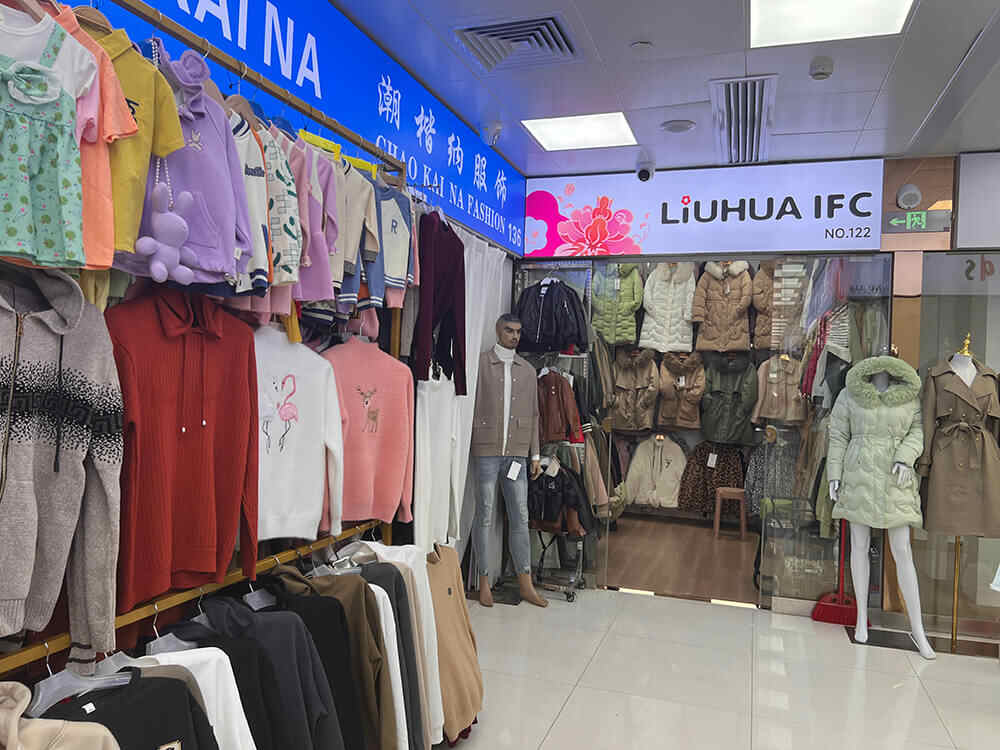April 9, 2025 (Wednesday) — The U.S. government announced a new round of high tariffs on Chinese products, including apparel and textiles. This round of tariffs includes a 50% base tariff and a 34% countervailing duty, raising the total tariff rate on Chinese goods to 104%. This policy is part of the U.S. effort to reduce dependence on Chinese manufacturing, but its impact on global supply chains—especially for clothing wholesale businesses—is profound.
As one of the world's largest apparel exporters, China is undoubtedly the country most affected by this trade policy. For buyers who rely on China's stable supply chains and high cost-efficiency, the pressing question is: How should sourcing strategies be adjusted? What's the next move?

1. The Impact of Tariff Increases on Global Clothing Wholesale Buyers
In recent years, trade frictions between China and the U.S. have been intensifying, with frequent changes in trade policies. Tariffs are no longer just economic tools but have become part of geopolitical strategies. This creates a high degree of uncertainty for businesses that rely on international sourcing.
For clothing wholesalers, this means:
- Increased product costs, especially for goods exported to the U.S.
- Squeezed profit margins, particularly for low-cost, high-volume fast fashion items.
- Disrupted inventory and stocking strategies, with unpredictable pricing and supply timelines.
In today's deeply globalized supply chains, cost fluctuations impact not only importers but also distributors, retailers, and even end consumers. Many wholesalers focused on the U.S. market are now forced to re-evaluate their sourcing networks, while buyers from Africa, the Middle East, Latin America, and Europe are also feeling the effects.
It's clear that clothing wholesalers must rapidly update their sourcing layout to stay competitive.

2. Strategic Response: Source Directly from Factories + Optimize Cross-Border Logistics
Faced with this situation, global buyers can adopt two core strategies:
(1) Work directly with source factories;
(2) Optimize logistics routes to avoid high-tariff markets.
1) Work Directly with Source Factories
China's Guangzhou is one of the world's leading garment manufacturing hubs. Despite rising tariffs, exports to non-U.S. markets still hold strong advantages. The Guangzhou LIUHUA Fashion Wholesale Market, in particular, brings together over 2,000 factory-backed vendors and operates with a mature export service model.
LIUHUA Market has decades of export experience and offers a full range of apparel, including women's wear, men's suits, children's clothing, and Muslim fashion (such as abayas). Many international buyers visit in person to check samples, communicate face-to-face with Chinese manufacturers, and place orders—often fulfilling multi-category sourcing needs in a single visit.
2) Optimize Cross-Border Logistics Routes
Beyond choosing the right factory, adjusting logistics routes is equally crucial. More and more buyers now choose to ship goods directly from China to the final destination, bypassing the U.S. high-tariff zone.
Currently, many wholesalers are shipping directly to:
- Dubai, as a distribution hub for the Middle East;
- Lagos or Nairobi, to serve West and East African markets;
- Mexico City, to supply the growing fashion demand across Latin America.
This isn't just a response to tariffs; it reflects a broader trend in global supply chains—direct shipments from China to Global South countries. It significantly reduces shipping costs, shortens delivery time, and simplifies customs procedures.
Platforms like the LIUHUA Market are well-positioned in this trend, offering dedicated shipping lines to countries like Mexico and Iraq, which are faster and more cost-effective than traditional freight routes.

3. Why Choose the Guangzhou LIUHUA Fashion Wholesale Market?
Even under high-tariff conditions, the Guangzhou LIUHUA Market remains a top-tier choice for global buyers:
1. Over 2,000 Source Factories
Direct cooperation with experienced Chinese manufacturers.
2. Years of International Wholesale Expertise
Helping buyers adapt flexibly to market shifts and policy changes.
3. Full-Range Apparel Categories
Women's, men's, children's, and Muslim clothing—all available for wholesale or custom orders.
4. End-to-End Global Logistics Support
Sea, land, and air freight options, with direct shipping lines to countries like Mexico and Iraq for faster, more stable deliveries.
Located in the heart of the LIUHUA commercial district in Yuexiu, Guangzhou, the market is surrounded by comprehensive infrastructure, including logistics firms, customs brokers, and sample makers—making it the ideal sourcing hub for global buyers.

4. LIUHUAMALL: Seamlessly Connecting Global Buyers with Chinese Manufacturers
To support overseas buyers who cannot travel to Guangzhou, the LIUHUA Market has launched its official online wholesale platform—LIUHUAMALL.
Through LIUHUAMALL, buyers can:
- Browse the latest apparel styles online;
- Chat directly with factory vendors;
- Request customizations and bulk pricing;
- Arrange international shipping—all in one place.
LIUHUAMALL bridges the gap between offline wholesale and online convenience, making it ideal for bulk clothing procurement from China, especially for buyers in the Middle East, Africa, and Latin America.
Whether you are an abaya wholesaler in Dubai, a casualwear importer in Latin America, or a children's clothing distributor in Africa, LIUHUAMALL can connect you directly to China's top garment factories—reducing costs and improving sourcing efficiency.
Conclusion: Shift Strategies and Seize New Global Opportunities
The U.S. 104% tariff on Chinese goods presents a serious challenge for the global clothing supply chain. But for agile and proactive wholesalers, it's also an opportunity to rebuild supply chains and optimize sourcing layouts.
By working with source factories, exploring emerging markets, and adjusting logistics strategies, global apparel buyers can reduce costs and increase efficiency—while positioning themselves for sustainable growth in a changing trade environment.Act now and refine your sourcing strategy!
Visit LIUHUAMALL.com today to start fast, efficient, and compliant wholesale cooperation with China's leading clothing manufacturers!
 Open in App
Open in App